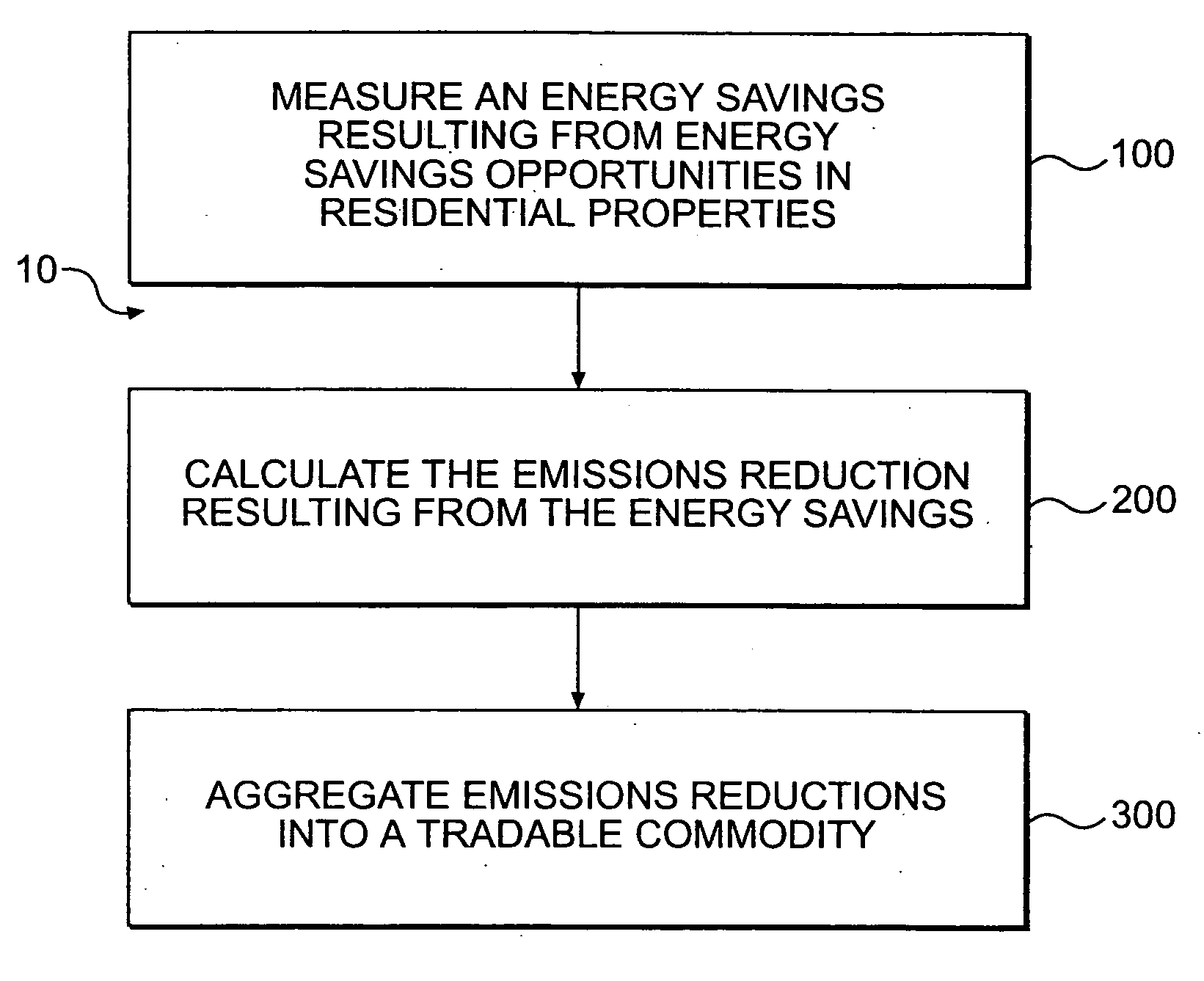Measurement and verification protocol for tradable residential emissions reductions
- Summary
- Abstract
- Description
- Claims
- Application Information
AI Technical Summary
Benefits of technology
Problems solved by technology
Method used
Image
Examples
Embodiment Construction
[0072]Reference will now be made in detail to embodiments of the system and method of the present invention, examples of which are illustrated in the accompanying drawings.
[0073]With reference to FIG. 1, the method 10 for quantifying reductions in residential emissions may comprise the steps of measuring an energy savings resulting from one or more energy savings opportunities in one or more residential properties 100, calculating an emissions reduction resulting from the energy savings 200, and aggregating a plurality of the emissions reductions into a tradable commodity 300. The tradable commodity may comprise tradable emissions reduction(s), tradable emissions credit(s), or any other suitable commodity for trading in any emissions trading market.
[0074]According to another embodiment depicted in FIG. 2, the method 20 may comprise the steps of estimating an energy savings resulting from one or more energy savings opportunities in one or more residential properties 100, calculating ...
PUM
 Login to View More
Login to View More Abstract
Description
Claims
Application Information
 Login to View More
Login to View More - R&D
- Intellectual Property
- Life Sciences
- Materials
- Tech Scout
- Unparalleled Data Quality
- Higher Quality Content
- 60% Fewer Hallucinations
Browse by: Latest US Patents, China's latest patents, Technical Efficacy Thesaurus, Application Domain, Technology Topic, Popular Technical Reports.
© 2025 PatSnap. All rights reserved.Legal|Privacy policy|Modern Slavery Act Transparency Statement|Sitemap|About US| Contact US: help@patsnap.com



